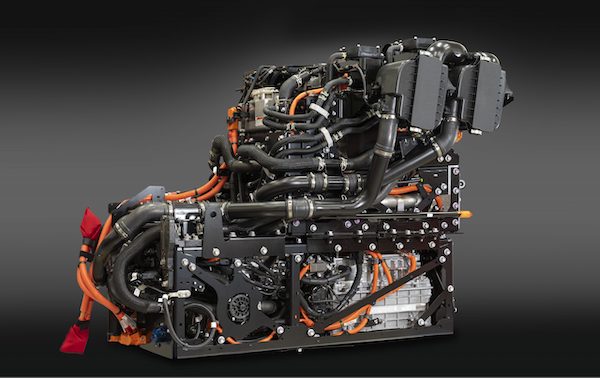Scientists and engineers have been finding ways to trap light and lasers and direct them for years using a variety of methods such as mirrors, reflective surfaces and high-tech materials like photonic crystals.
The “Ground-Based Air Defense Directed Energy On the Move Project” (GBAD DE OTM) outfits a vehicle, such as a Humvee, with a 1 ton laser capable of shooting down drones. The system costs $400,000 per vehicle and blasts lasers at full power for up to two minutes and recharges in 20 minutes.
The beam is from 25 to 50 kilowatts and radar and radio frequency sensors determine range data and engage a target using a computer controlled guiding and targeting system. Of course lasers have multiple capabilities including targeting stationary objects, moving objects on the ground, land and sea. The most difficult targets are over water due to the maritime environment’s effect on a laser’s ability to propagate.
Lasers on Navy Ships To Deal With New Threats
The newest lasers do well enough over the ocean that they are now being installed and tested on Navy ships. These laser weapons will be installed next to Gatling guns to provide not only an offensive capability but to defend the ship from incoming threats. The range of a 20 mm Gatling gun, which fires 3,000 to 4,500 rounds per minute is not published by the military, but according to industry analysts the military would not be interested in a laser technology if it did not have a greater range than the Gatling gun.
Although the US pioneered the use of UAVs for military conflicts, countries all over the world, including Iran, now have UAV weapon systems and the need for a laser-based defense against UAVs is a major priority. Navy ships are also keen on using lasers to fend off squadrons of small boats 1 mile (1.6 km) or greater in distance from the ship.
Improvement Over Bombs & Bullets
Finally, evading laser strikes will be difficult for enemies due to rapid tracking and quick response of the laser system. The systems are pinpoint accurate and the amount of wattage can be adjusted depending on the desired result; a bad burn can be directed at a person or an entire vehicle can be destroyed quickly. Lasers are a significant improvement over bombs and bullets which have an “all or nothing” effect and “collateral damage” is not as much of an issue with lasers.
Still Under Development
The Navy recently published the following RFP to potential contractors.
A vehicle-mounted on-the-move short-range air-defense laser system to defeat Low Observable/Low Radar Cross Section (LO/LRCS) threats to a Marine Corps Air-Ground Task Force (MAGTF). Shortfalls of the Marine Corps’ current low-altitude air-defense program of record have been identified with the advent of new threats, specificallyUnmanned Aerial Systems (UASs). Threat UASs may have surveillance weapon payloads. The need for a new expeditionary mobile airdefense weapon with improved effectiveness has been identified. GBAD DE OTM will provide closein, low altitude, surface-to-air weapons fire in defense of MAGTF assets against LO/LRCS threats. GBAD DE OTM’s mission is to prevent reconnaissance, surveillance, targeting, and engagement of expeditionary forces.






